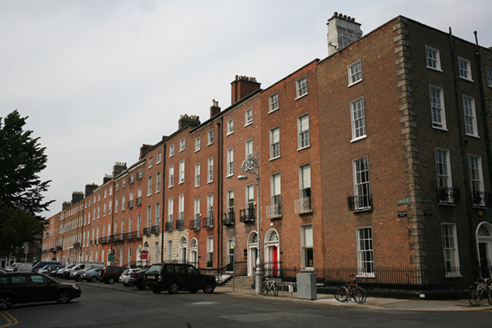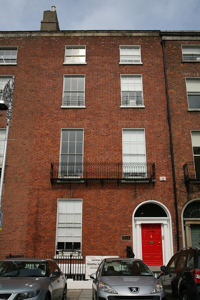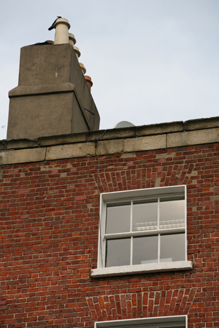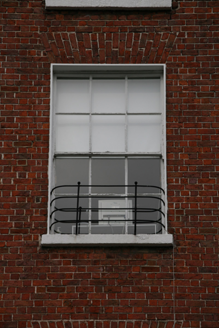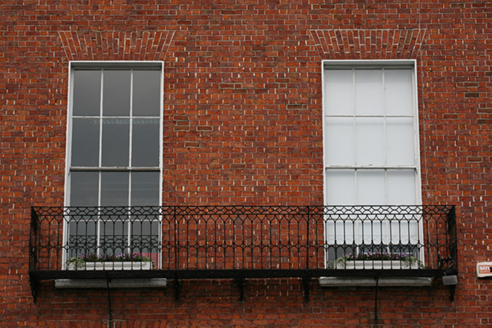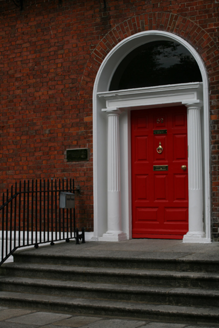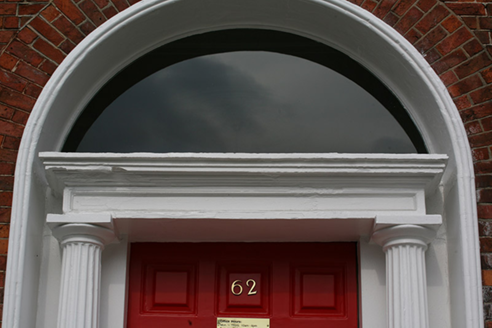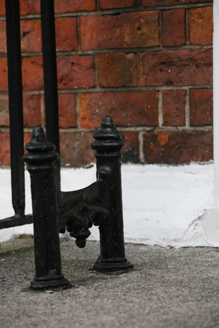Survey Data
Reg No
50930085
Rating
Regional
Categories of Special Interest
Architectural, Artistic
Original Use
House
In Use As
Office
Date
1815 - 1825
Coordinates
316530, 233135
Date Recorded
10/09/2015
Date Updated
--/--/--
Description
Terraced two-bay four-storey over basement former townhouse, built c. 1820, with two-storey over basement return to rear (north). Now in use as offices and college. M-profile slate roof, hipped to the east and set behind parapet wall with moulded granite coping and frieze. Replacement metal hopper and downpipe breaking through parapet to east. Shouldered rendered chimneystacks with lipped clay pots to west party wall. Red brick walls laid in Flemish bond with lime pointing. Moulded granite plinth course over ruled-and-lined rendered basement wall. Gauged brick square-headed window openings with granite sills and timber sash windows; original eight-over-eight pane to basement with iron grille and granite surround, early twentieth-century replacement six-over-six pane sash windows to remainder. Iron sill-guards to second floor and full-span iron balcony to first floor. Some Wyatt-style timber sash windows with iron grilles to rear elevation. Gauged brick round-headed door opening with masonry Doric doorcase comprising square-headed door opening flanked by half-fluted Doric columns supporting panelled lintel entablature and plain glazed fanlight. Original timber panelled door with eleven raised-and-fielded panels and brass door furniture opening onto shared granite platform with iron boot scraper and nosed granite steps opening onto street. Platform and basement enclosed by original wrought- and cast-iron railings set on granite plinth wall. Granite steps with iron balustrade provide access to basement. Street fronted, forming part of a continuous terrace of former townhouses lining north side of Fitzwilliam Square. Original brick screen wall to rear plot with segmental-headed carriage-arch opening. Flush timber doors and recent steel fire escape inserted to rear elevation.
Appraisal
This former townhouse retains its overall external composition, rare lime wigged brickwork and well executed ironwork. The building contributes to the historic character of the square and the wider south Georgian core. Laid out in 1791 by the surveyors J & P Roe, Fitzwilliam Square was the last of the city’s Georgian squares to be completed. Development was staggered and progressed slowly until after the Napoleonic Wars.
